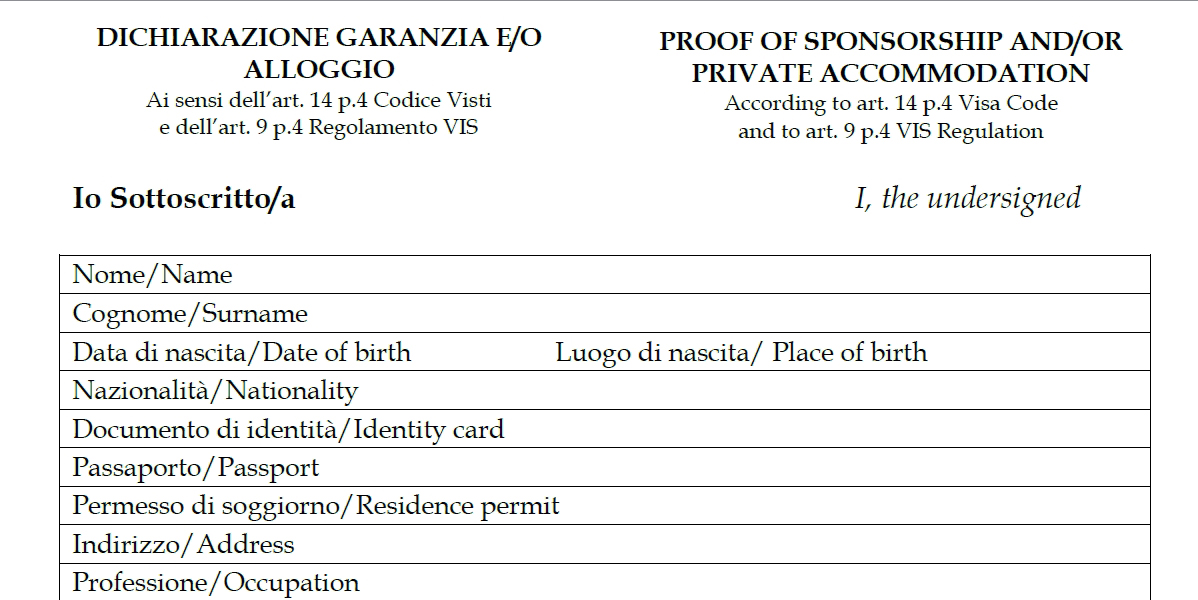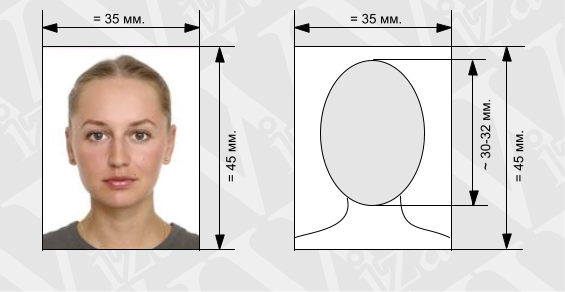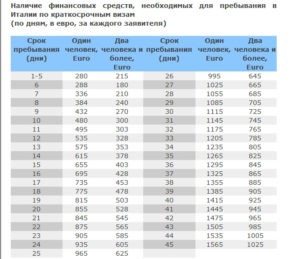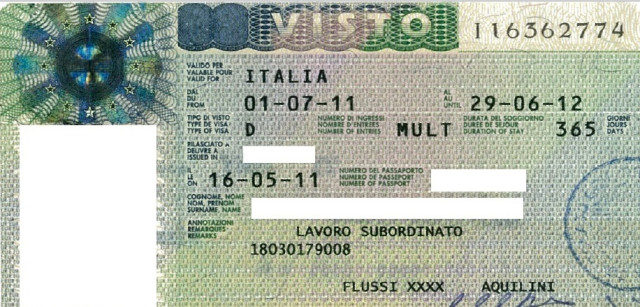
Applying for a Schengen visa to Italy yourself
Italy is such a multifaceted and interesting country that many of its cities are perceived as separate states. Rome, Venice, Florence, Vatican – these words sound like music to experienced independent travelers and tourism newcomers. Visits to the country by foreigners are quite common. Russians’ thoughts about unique sights and the azure coast of the Adriatic Sea end with a logical question: do you need a visa to Italy? The country is included in the list of Schengen countries, so a visa to Italy is required. In addition, there are several types of entry permits. Let's look at them in more detail.
The type of visa required depends on the duration and purpose of your stay.
There are 4 visa categories: 
- Category A. Designed for transit entry of those traveling by air with a transfer at an airport in Italy. Obtaining this category of permit does not give the right to leave the transit zone of the airport and move around the country.
- Category B. The same transit visa, but with the ability to cross the border with Italy 2 times. It is extremely rare that the Consular Section allows you to open a visa to Italy for more than double entry.
- Category C. The most popular type of visa, which allows the applicant to stay in the country for up to 90 days. Issued for a tourist trip, a trip to visit friends by invitation, business entry, or sports competitions.
- Category D. A national visa, the possibility of issuing which is considered in accordance with the legislation of the country. Issued for a period of more than 3 months with the possibility of extension. The grounds for extradition may be long-term medical treatment, study or work in the country, or family reunification.
A visa to Italy can be obtained at the Italian Consulates in Moscow and St. Petersburg. Citizens living in cities remote from the capital submit a package of documents to regional visa centers.
Important! The first entry with a Schengen visa must take place in the country where it was issued. Otherwise, the Consulate may refuse to re-issue a visa or extend it.
Documents for a short-term visa
A visa to Italy for a short trip is not required if the applicant already has a valid one. For example, permission to travel to Spain or France was initially issued. A foreigner entered the country, stayed there for several days and wants to visit Italy as well. If you have not previously received a visa, you must apply for an Italian Schengen visa.
List of documents for a visa to Italy for a stay of up to 3 months:
- International passport, supplemented by a photocopy of the first page.
- If Schengen visas were previously issued, you must attach copies of them.
- One photograph of a generally accepted standard on a white background without ovals, measuring 3.5x4.5 cm.

- for an Italian visa, completed in block letters in English and personally certified by the applicant. When registering electronically at the visa center, information is entered online and the application form is uploaded automatically - you only need to print it before submitting documents.
- A copy of the pages with stamps of the civil passport.
- Originals and copies of round-trip air tickets, printed electronic tickets will do.
- Confirmation of accommodation - a voucher provided by a travel agency or a printed confirmation sheet with hotel contacts, tourist data and dates of stay at the hotel.
- A certificate from the place of employment with all the details of the company, indicating the position, salary and confirmation of the provision of leave that applies to travel. The certificate is valid for no longer than a month at the time of submission to the Consulate, is confirmed by a seal and signed by the head.
- For a guest visa - an original official invitation from a company or individual. The document is drawn up on a special form; it must discuss the provision of temporary housing to the applicant by the inviting party and the provision of financial and medical assistance, valid for the entire duration of residence in the country. It is also necessary to indicate the duration of the trip and the degree of relationship with the person living in Italy. Additionally, a copy of the passport of the inviting person who has citizenship or is provided.

- Medical insurance, the validity of which covers the entire period of the applicant’s stay in the country.
- Proof of payment of the visa fee.

For unemployed citizens, a certificate of employment is replaced by:
- A certificate from the bank confirming the availability of the required amount of money in the account.
- Sponsorship letter and certificate of employment of the sponsor.
- Traveler's checks with attached copies.
Important! An Italy tourist visa can be issued for single, double or multiple entry. For those wishing to frequently enter and leave the country, a multiple visa to Italy is issued. It is possible to obtain a visa to Italy for three or five years, but being present in the country during this period is allowed for no longer than 90 days per six months.
Documents for a transit visa
Transit through an Italian airport without a visa is prohibited. However, if there is a valid Schengen stamp or the final destination belongs to the list of countries, there is no need to obtain an additional transit visa. In other cases, permission to cross the border is required.
Obtaining a visa to Italy for transit is possible if the time between flights is more than 6 hours. To approve transit, you need the same papers as for a tourist visa, only the hotel reservation needs to be replaced by attaching:
- A copy of the visa to the third country stamped in the passport.
- All existing air or train tickets.
- Proof of the need to transit through Italy. In 2017, you can confirm the expediency of a trip by offering a visa center employee a scheduled route or copies of air tickets to a third country.
Important! When submitting copies of documents for a visa of any category to the Consulate, be sure to take their originals so that employees can compare the copies with the originals. The consul has the right to demand additional documents from the applicant, or invite him for a conversation.
Documents for a national visa
- International passport, copies of the photo page and previously issued visas.
- Civil passport and its copy.
- Two photographs 3.5x4.5 cm of the established standard.
- with the applicant's autograph. Please note that each visa type requires its own application. It differs significantly from the application form for a short-term Schengen visa
- Medical insurance valid for the first month of long-term stay in Italy.

- Book a one-way air ticket for a long trip.
- Confirmation of the availability of a place of residence for the entire period of residence - for example, an apartment rental agreement.
- Financial guarantees confirming the applicant’s ability to provide for himself while living in the country. Suitable for bank or credit card. The required amount of money is determined at the rate of 450 euros for each month of stay.
- The original consent to the processing of personal data is filled out on a standard form and signed by the applicant.
- Confirmation of payment of the consular fee.
Supporting documents for obtaining an Italian visa by students:
- An invitation from the university indicating all the details of the educational institution.
- Confirmation of student enrollment.
Additionally, for family reunification the following is provided:
- An invitation from an Italian citizen or a person with a residence permit.
- A copy of the inviter's ID.
- A document proving a direct relationship (marriage certificate, birth certificate, passport stamp).
For a work visa you will additionally need:
- Work permit from the Immigration Service in Italy, valid for 3 months.
- Invitation from the organization.

- A concluded contract with the employer.

After entering the country on a long-term visa, the applicant must submit documents for a residence permit within the next 8 days. Staying for more than 3 months without obtaining a residence permit in Italy is prohibited by law.
Traveling with a child
To travel with a minor to the Consulate you must provide:
- A form signed by both parents.
- Photos in accordance with the requirements of the Consulate.
- International passport of a minor along with a copy.
- Birth certificate, supplemented by a notarized copy.
- Power of attorney for travel from one parent (if traveling abroad with mom or dad) or from both (if traveling with a stranger). A copy of the identity card of the parent issuing the consent is attached to the power of attorney.
- Original and copy of the international passport of the person accompanying the child, and the travel visa issued for him.
Visa cost
The price of a visa is calculated from the amount of the consular fee and the service fee at the visa center. When submitting documents directly to the Consulate yourself, you only pay a visa fee, which is 35 euros for a category C visa and 116 euros for a long-term visa.
If you need an urgent visa to Italy, you will have to pay twice as much – 70 euros and 232 euros, respectively. The service fee is different everywhere - the amount fluctuates around 30 euros; delivery of the package by courier is additionally paid. The delivery price depends on the region where the visa is issued.
Some categories of citizens are exempt from paying the fee:
- Children under 6 years old.
- Direct relatives (spouses, parents, children, grandchildren) of Italians or EU citizens traveling for family reunification.
- Disabled people and their accompanying persons.
- Participants in mass artistic or scientific events.
- Persons participating in exchange programs under an agreement between sister cities.
- Persons in need of serious medical treatment, or entering due to a serious illness or funeral of close relatives - Italian or EU citizens.
All other categories of applicants are obliged to pay a visa fee at the visa center cash desk before submitting documents. If the application is refused, the cost of the Italy visa will not be refunded to the applicant.
Procedure for submitting documents, biometrics

Applying for an Italy visa on your own is much easier than it seems. In addition to the Consulates in Moscow and St. Petersburg, there are 24 visa centers in the regions of Russia. Before submitting, you must determine the visa center under whose jurisdiction the applicant is located.
The feeding algorithm is as follows:
- The first step is to sign up to submit documents on the visa center website.
- When registering, an electronic form will be available to fill out. All you need to do is print it out and sign it.
- Prepare all other required documents and visa fees.
- At the appointed time, come to the visa center with a package of documents.
- Go through the fingerprinting procedure, pay the fee at the cashier and hand over the documents to the visa center employee for processing.
Important! Only the applicant can submit a package of documents. This is due to the need for mandatory submission of biometric data, which was introduced in 2015. The visa center employee takes the applicant's fingerprints and takes a digital photo, the data is uploaded to the worldwide VIS system and stored there for 5 years. Children under 12 years of age are exempt from fingerprinting procedures.

Registration deadlines
Typically, document processing takes from 4 to 9 business days; during the tourist season, the period increases to 2-3 weeks. Processing an application at a regional center requires more time, since it requires sending prepared papers to the Embassy and receiving them.
It is better to think about submitting an application in advance - about a month before the planned date of travel. You can track the status of your passport with a visa stamp on the visa center website or by phone.
Refusal of a visa
Italians are friendly towards Russian tourists, but refusals often occur. Most often this is due to the applicant’s poor preparedness – inattention when collecting documents or typos when filling out the application form.
But there are other reasons:
- Insufficient financial support of the applicant.
- False information included in the application.
- Unused or misused previously obtained Italian visas. For example, a visa was obtained for Italy, but the first entry stamp in the passport belongs to Switzerland or Spain.
To avoid refusal and be guaranteed to receive a Schengen visa to Italy, you must strictly fulfill all the requirements when collecting a package of documents. You can appeal the refusal and resubmit the documents, but you will have to pay the consular fee again.